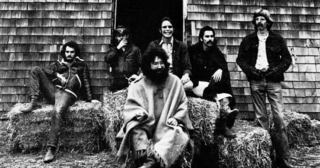
Grateful Dead was an American rock band formed in 1965 in Palo Alto, California. The band is known for its eclectic style, which fused elements of rock, blues, jazz, folk, country, bluegrass, rock and roll, gospel, reggae, and world music with psychedelia, the improvisation of their live performances, and its devoted fan base, known as "Deadheads". According to the musician and writer Lenny Kaye, the band's music "touches on ground that most other groups don't even know exists." For the range of their influences and the structure of their live performances, Grateful Dead are considered "the pioneering godfathers of the jam band world".

Psychedelic rock is a rock music genre that is inspired, influenced, or representative of psychedelic culture, which is centered on perception-altering hallucinogenic drugs. The music incorporated new electronic sound effects and recording techniques, extended instrumental solos, and improvisation. Many psychedelic groups differ in style, and the label is often applied spuriously.

Ronald Charles McKernan, known as Pigpen, was an American musician. He was a founding member of the San Francisco band the Grateful Dead and played in the group from 1965 to 1972.
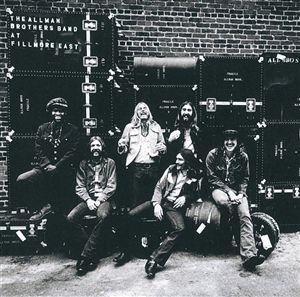
At Fillmore East is the first live album by American rock band the Allman Brothers Band, and their third release overall. Produced by Tom Dowd, the album was released on July 6, 1971, in the United States by Capricorn Records. As the title indicates, the recording took place at the New York City music venue Fillmore East, which was run by concert promoter Bill Graham. It was recorded over the course of three nights in March 1971 and features the band performing extended jam versions of songs such as "Whipping Post", "You Don't Love Me" and "In Memory of Elizabeth Reed". When first commercially released, it was issued as a double LP with just seven songs across four vinyl sides.

The Fillmore is a historic music venue in San Francisco, California.

Bill Graham was a German-American impresario and rock concert promoter.
Chester Leo "Chet" Helms, often called the father of San Francisco's 1967 "Summer of Love," was a music promoter and a counterculture figure in San Francisco during its hippie period in the mid- to-late 1960s.
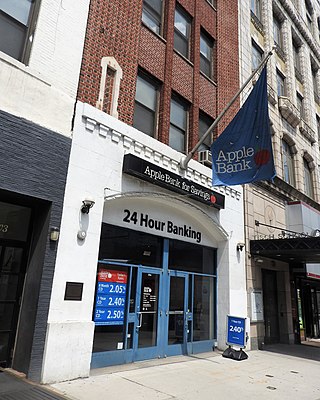
The Fillmore East was rock promoter Bill Graham's rock venue on Second Avenue near East 6th Street on the Lower East Side section of Manhattan, now called the East Village, in New York City. The venue was open from March 8, 1968, to June 27, 1971, and featured some of the biggest acts in rock music of that time. The Fillmore East was a companion to Graham's Fillmore Auditorium, and its successor, the Fillmore West, in San Francisco.

Winterland Ballroom was an ice skating rink and music venue in San Francisco, California, United States. The arena was located at the corner of Post Street and Steiner Street. It was converted for exclusive use as a music venue in 1971 by concert promoter Bill Graham and became a popular performance location for many rock acts. Graham later formed a merchandising company called Winterland Productions, which sold concert shirts, memorabilia, and official sports team merchandise.

Donald Kirshner was an American music publisher, music consultant, rock music producer, talent manager, and songwriter. Dubbed "the Man with the Golden Ear" by Time magazine, he was best known for managing songwriting talent as well as successful pop groups, such as the Monkees, Kansas, and the Archies.
Tom Constanten is an American keyboardist, best known for playing with Grateful Dead from 1968 to 1970, for which he was inducted into the Rock and Roll Hall of Fame in 1994.

The San Francisco sound refers to rock music performed live and recorded by San Francisco-based rock groups of the mid-1960s to early 1970s. It was associated with the counterculture community in San Francisco, particularly the Haight-Ashbury district, during these years. San Francisco is a westward-looking port city, a city that at the time was 'big enough' but not manic like New York City or spread out like Los Angeles. Hence, it could support a 'scene'. According to journalist Ed Vulliamy, "A core of Haight Ashbury bands played with each other, for each other"

The Boston Tea Party was a concert venue located first at 53 Berkeley Street in the South End neighborhood of Boston, Massachusetts, and later relocated to 15 Lansdowne Street in the former site of competitor, the Ark, in Boston's Kenmore Square neighborhood, across the street from Fenway Park. It operated from 1967 to the end of 1970. Its closing was due in part to the increasing cost of hiring bands who were playing more and more at large outdoor festivals and arena rock concerts.
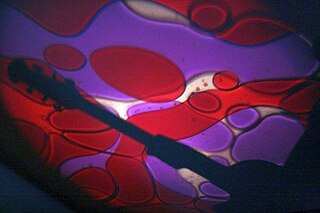
Liquid light shows are a form of light art that surfaced in the early 1960s as accompaniment to electronic music and avant-garde theatre performances. They were later adapted for performances of rock or psychedelic music.
The Joshua Light Show, created by Joshua White, was a liquid light show. It was known for its psychedelic art and served as a lighting backdrop behind many live band performances during the late 1960s and early 1970s.
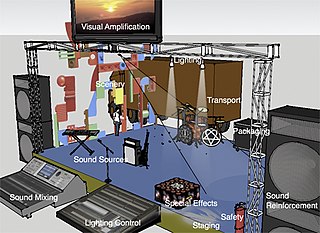
Live event support includes staging, scenery, mechanicals, sound, lighting, video, special effects, transport, packaging, communications, costume and makeup for live performance events including theater, music, dance, and opera. They all share the same goal: to convince live audience members that there is no better place that they could be at the moment. This is achieved through establishing a bond between performer and audience. Live performance events tend to use visual scenery, lighting, costume amplification and a shorter history of visual projection and sound amplification reinforcement.

Fillmore: The Last Days is a live album, recorded at the Fillmore West in San Francisco, California from June 29 to July 4, 1971. It contains performances by 14 different bands, mostly from the San Francisco Bay Area, including Santana, the Grateful Dead, Hot Tuna, Quicksilver Messenger Service, and the New Riders of the Purple Sage. It was released by Columbia Records in June 1972 as a three-disc LP. It was re-released by Epic Records in 1991 as a two-disc CD.
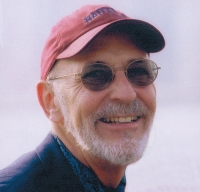
David Edward Byrd is an American graphic artist, designer, illustrator and painter. Many of his designs are considered to have helped define the look of rock and roll music starting in the 1960s. He is most well known for his poster designs, including his rock posters for the Fillmore East as well as his Broadway theatre posters.

Bonnie MacLean, also known as Bonnie MacLean Graham, was an American artist known for her classic rock posters. In the 1960s and 1970s she created posters and other art for the promotion of rock and roll concerts managed by Bill Graham, using the iconic psychedelic art style of the day. MacLean continued her art as a painter focusing mostly on nudes, still lifes, and landscapes. Her work has been placed alongside the "big five"—male Haight-Ashbury poster artists who were seminal to the "iconography of the counterculture scene."
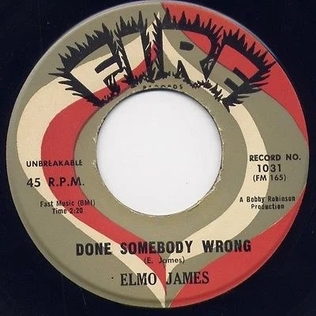
"I Must Have Done Somebody Wrong" is a blues song written and recorded by Eddie Kirkland in 1959. Using the same lyrics but modifying aspects of the music, Elmore James recorded it as "Done Somebody Wrong" in 1960; he took sole writing credit for it and it came to be known as an Elmore James song. "Done Somebody Wrong" was interpreted by the Allman Brothers Band in 1971 and featured on their classic live album At Fillmore East. As Billboard magazine has stated, the song became "more associated with the Allmans than with James in the end."















